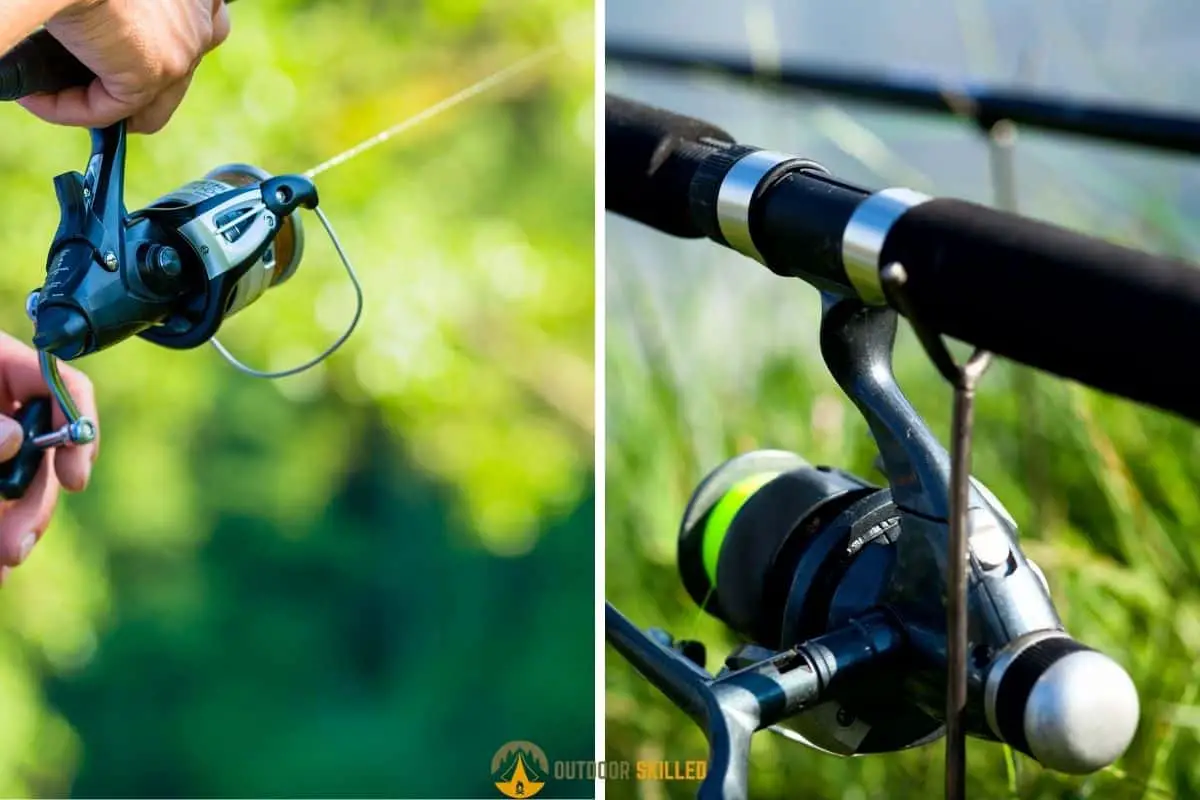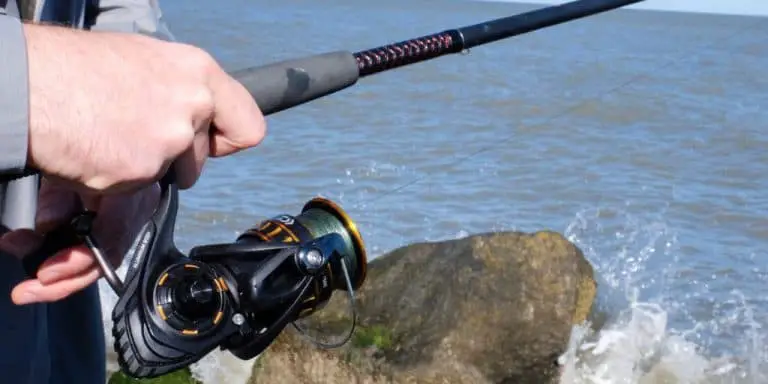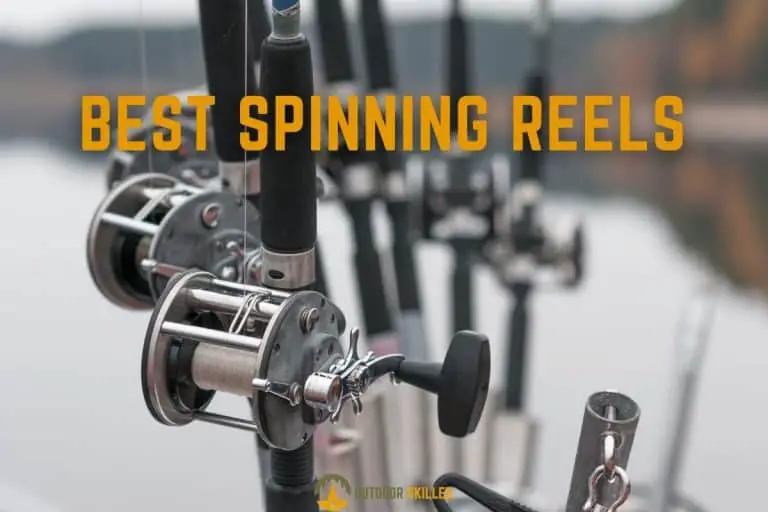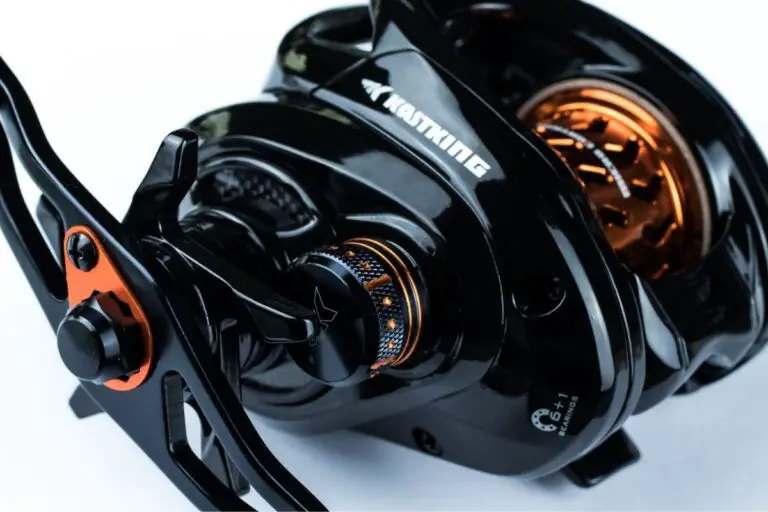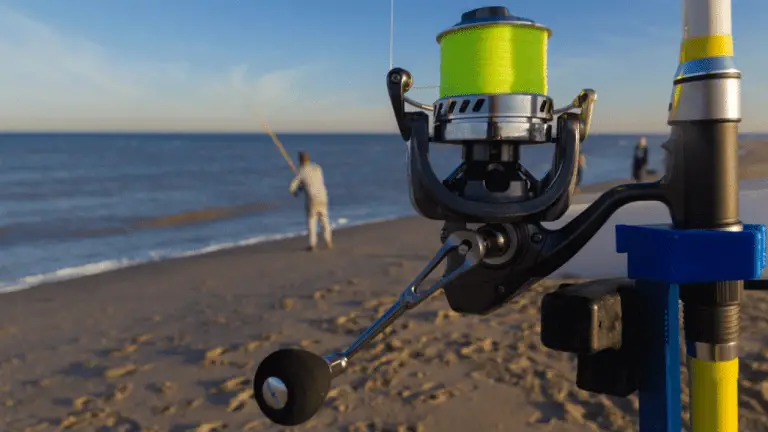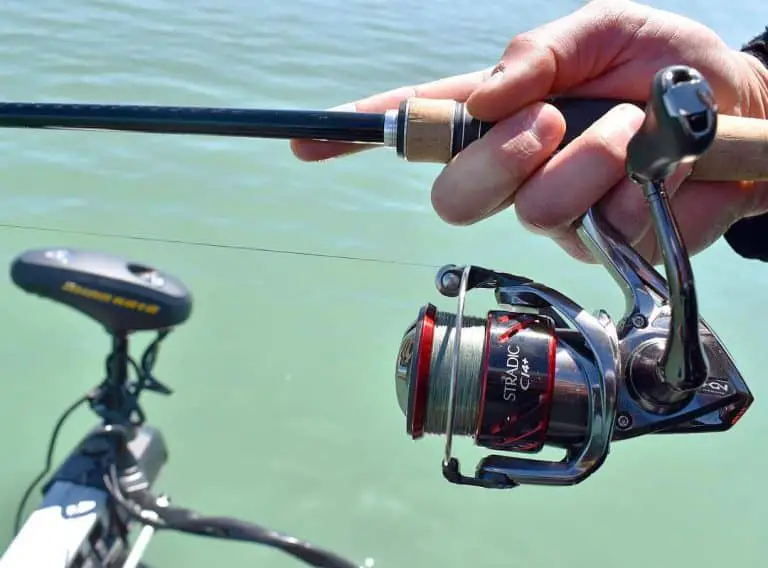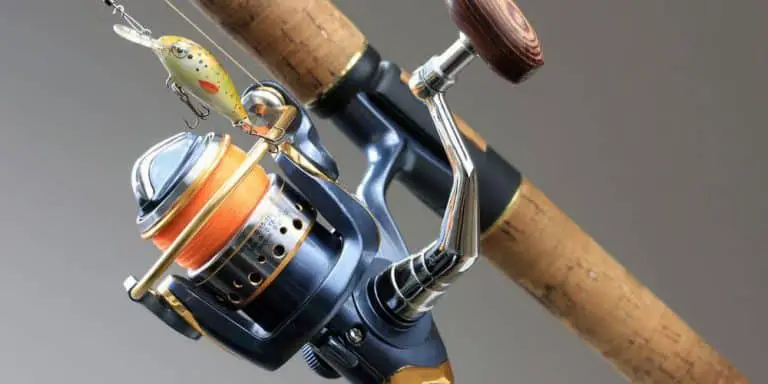Spincast VS Spinning Reel – Which To Use and When
If you’re a newbie angler who is deciding which reel to use in your next fishing trip, you may feel confused by which one to use. Spincast reels and spinning reels are both good types of reels that can be enough for you, but each one is more suitable for specific situations to enhance your experience.
So, what’s the difference between spincast and spinning reel? The difference between spincast and spinning reels are casting range, bait size, durability, and the experience you need to use it. Spincast is suitable for heavier bait than the spinning reel. The spinning reel is more durable and offers more casting range than spincast.
Keep reading to know more about the differences between both types and which one to use and when.
Table of Contents
What Are Spincast Reels?

Spincast reels are a common type of reels that have a button on them when pressed, it allows the line to unspool freely. By far it’s the most simple reel out there and can be used by beginners who want something easy to work with and fits the budget.
Spincast reels have a metal nose cone that covers up all of the reel’s main elements. On the back, there is a button that toggles the line between free-spool and locked. They have a system for adjusting the drag. This system effectively helps you to control the amount of resistance a fish feels when pulling on your line.
Remember when I said that spincasts are easy to use? Let me tell you why. To cast a spincast, press the spool control button, take a swing and let go. When you let go of the handle, the line will fly out to where the tip of your rod is pointed. That’s it! When you think it’s time to stop, you just press the button one more time.
Pros
- They’re easy to use. You press the button to release the line and once again to stop it when you want.
- They’re cheap. You can pick a good quality spincast reel that’s cheaper than any other reel in the market and it’ll do the job.
- No line twist. The simple design allows the line to unspool freely and it does not rotate during the cast.
- No backlash. Because the line is covered by the plastic box, spincast reels do not become tangled
Cons
- Limited casting range.
- Less precise casting.
- Low line capacity.
- Their closed-face design isn’t practical in the long run. It tends to keep water and debris inside the reel, which can damage it over time.
- Less durable. Most spincast reels aren’t that well made. They will rarely last you longer than a single season.
You can check my picks for the best spincast reels here.
What Are Spinning Reels?
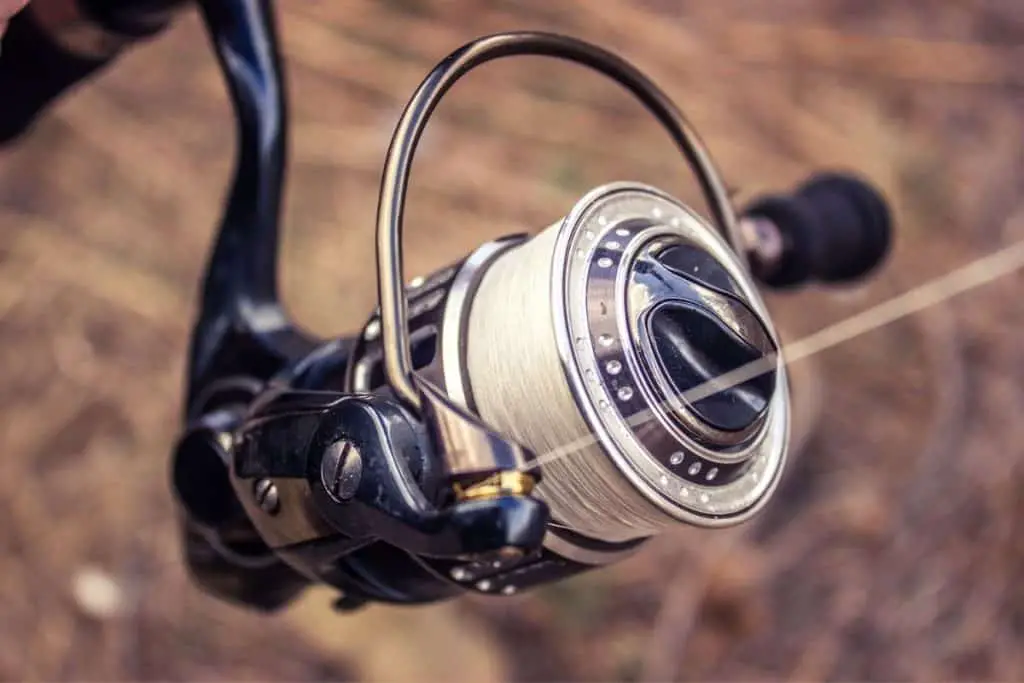
Spinning reels are another type of reels that are very common in the fishing industry. They’re the most used ones due to how effective they can be for various situations.
The spinning reel has an open-face configuration and the drag adjustment is located on top. It includes a metal bail that serves to secure the line and keep it from unspooling. The bail is also important since it leads the line back into the spool equally.
The design also allows comfortable holding and easy casting. Since spinning reels are attached to the rod from below, it offers a perfect holding position, but also a good balance when casting. That’s one of the reasons why casting with a spinning reel is easy-peasy.
To keep the line from unspooling, simply disengage the bail and pinch the line against the rod with your index finger. Swing the rod from the side or overhead next. Release the index finger approximately halfway through the motion. Finally, point the tip of the rod in the direction you want the bait to land.
It’s important to note that most spinning reels immediately close the bail after you start reeling. The problem is that the first spin always causes the line to miss the spool, resulting in a tangle. When you chuck the line out, please remember to manually return the bail to its starting spot.
Pros
- Comfortable holding. Since it hangs beneath the rod, it gives you a more natural holding.
- Easy to use. It gives you a mighty performance with a little effort.
- Far casting distances. It helps if you’re fishing on shore.
- Good price range. Spinning reels often range between 50-to-150$ giving you the chance to pick the price that suits you.
- Works well with light lines and bait.
Cons
- Causes the line to tangle. If you’re not careful with handling the bail, you can easily get line twists and tangles.
- Doesn’t work well with heavy gear. When you load spinners with heavier lures and lines, their performance begins to drop noticeably.
You can check my picks for the best budget spinning reels here as well. Or you can check this guide to the best ultralight spinning reels.
The Major Differences Between Spincast Vs Spinning Reels

Design
With just one look you can see how different spincast reels are from spinning reels. Spincast reels have a metal nose cone that covers up all of the reel’s main elements while spinning reel components are out in the open.
When casting, spincast operates with a button to release and stop while in spinning reels you use your index finger to hold the line in place during the cast.
Needed experience
If you are completely new to fishing, you probably have the most success by using a spincast reel but anglers with a bit more experience may find a spinning reel preferable.
Complexity
Spinning reels are a little more complicated to use than the spincast, but a lot more efficient and durable. Spincasts are not that durable and rarely last more than a fishing season.
Casting range
Spinning reels have more casting range and can be used on-shore to access large open water. Spincast, on the other hand, can’t cast that far and has no accurate casting overall.
When To Use Spincast Vs Spinning Reel?
Using a spinning reel is excellent when you’re casting small jigs and spinners for trout in streams, sunfish, and crappie, etc. They have an advantage over fly rods that there is no backcast, so you don’t have to think about what’s behind you when you cast, as you would on a fly rod.
Spincast, on the other hand, is suitable for almost all medium-sized fishing conditions. They are produced in huge sizes to handle some surprisingly large fish, including some inshore saltwater species.
A spincast set up in the right sizes is ideal for both smallmouth and largemouth bass fishing, medium-sized catfish up to 25-40 pounds, trout, white bass, carp, and also mid-sized stripers and snook.
7 Pro Tips You Need To Know
- Make sure to balance the rod. No matter what reel you’re going for, choose a size that fits your rod not to be too heavy or too light.
- Pay attention to the wind direction when using a spincast. Fishing with spincast is best done when the wind is behind you. Or it could be on the sides. Although this seems like a simple tip, it could make a lot of difference in the distance of your cast.
- Don’t choose big bait for spinning reels. They’re designed to handle small and medium-sized bait only whether it is plastic lures, spinners, soft bait, hard bait, or live bait. Heavier bait can make its performance drop to the ground.
- Big bait means greater distances for spincast reels. One of the best lures is a 5 inches paddle tail swim-bait. But if you want to go deeper than that you can change it to jerk bait.
- Maintenance is important for spincast. Built-up dirt and water inside your spincast can drastically lessen its time making it last for just a couple of months. Make sure to use a soft, damp cloth to wipe off all the visible dirt and grime as much as you can from its closed box.
- Choose a braided line for spincast reel to reach more distances. casting a monoline for a longer distance doesn’t make the line strong against the pull of the fish. So go for a braided line.
- Practice casting. You won’t know how to best use your reel if you don’t practice to test what you can do with it and what you can’t.
Conclusion
To sum it up one last time, here’s a quick comparison between spincast reels and spinning reels for you to take a look at:
| Reel | Difference | Pros | Cons |
|---|---|---|---|
| Spinning | – Hangs beneath the rod – Visible components – The line wraps around the moving spool and goes through the roller before continuing to rod | – No backlash – works well with light lines and lures – easy to cast | – Can make the line twist – Doesn’t work well with heavy gear |
| Spincast | – It has a button on the reel is pressed which allows the line to unspool freely | – They’re easy to use. – They’re cheap. – No line twist. – No backlash. | – Limited casting range. – Less precise casting. – Low line capacity. – Their closed-face design isn’t practical. – Less durable |

It is obvious from the preceding discussion of the spincast reel vs the spinning reel that the spinning reel is obviously the favorite of the two due to its user-friendliness, resilience, and versatility.
While the choice is completely up to you, it is recommended that every angler go for a spinning reel rather than a spincast reel because the former is not only more powerful but also a more cost-effective option.
Related Questions
What Are The Types Of Reels?
There are 4 types of reels: spincast, baitcasting, spinning, and fly reels. Each type of fishing reel requires a different skill level, function, and fishing technique. Outfitting your fishing rod with the right reel is important because it ensures your experience is a successful one.
How To Choose The Right Reel Size?
To choose the right reel size you need to determine the fishing line you want to use the most. The smaller the reel you can buy, the lighter the line you want to use. On a spinning reel, a ten-pound test line can be used at the highest strength and diameter.
Helpful Resources
Fishing Reel Care and Maintenance 101: Fight the Fish – Not the Reel by Jeff C. Holder (you can also check on Amazon here)
If you like this article, please share it or pin it, you can find the share buttons below. We will really appreciate it ❤️

